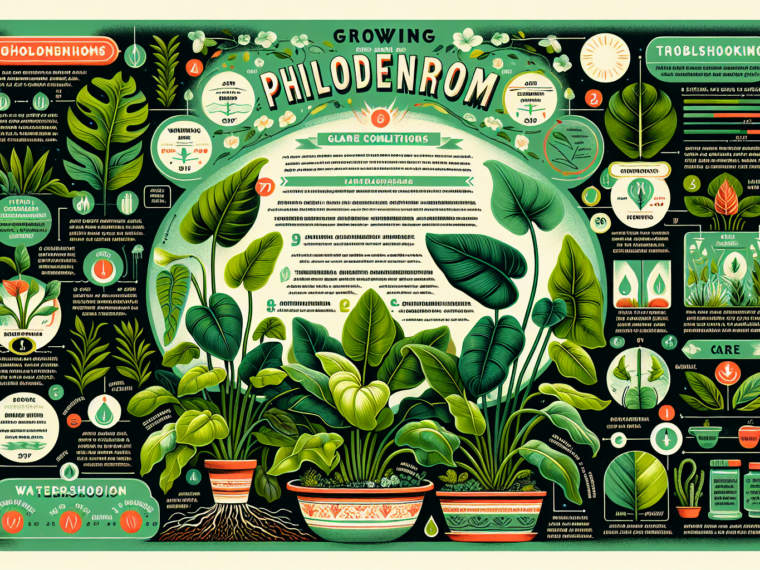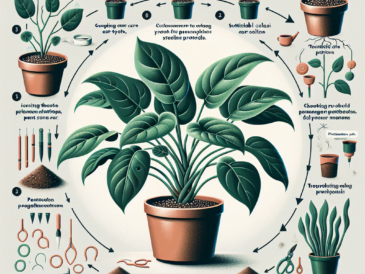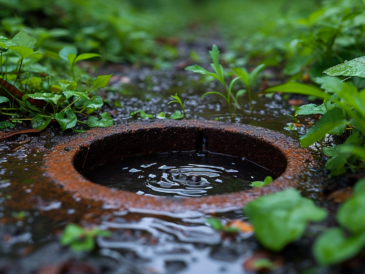Key points
• Choose the Right Environment: Philodendrons thrive in warm, humid conditions with indirect sunlight. They prefer temperatures between 60-75°F (16-24°C) and can suffer in temperatures below 55°F (13°C). Ensure the plant is in a well-draining potting mix to avoid waterlogged soil, which can lead to root rot.
• Watering and Feeding: Water philodendrons when the top inch of soil feels dry, typically once a week, but adjust according to humidity and temperature. Overwatering can harm the plant, so ensure proper drainage. Feed with a balanced, water-soluble fertilizer every month during the growing season (spring and summer).
• Pruning and Maintenance: Regularly prune your philodendron to encourage bushier growth and remove any yellow or dead leaves. Clean the leaves with a damp cloth to remove dust and help the plant absorb more light. Repot the plant every few years or when it becomes root-bound to promote continued growth.
Types of Philodendron
When we dive into the types of Philodendrons, we commonly encounter the Heartleaf Philodendron, also known as Philodendron hederaceum. A close relative worth mentioning is the Split-leaf Philodendron or Philodendron bipinnatifidum, among several other varieties that intrigue plant owners around the globe.
Optimal Growing Conditions
Growing Philodendron plants is an artform centered around the balance of light and shade. These plants prefer balanced conditions where neither too much nor too little light can disrupt their growth patterns. Temperature and humidity favor a warm and moist environment reminiscent of rainforests, while a nutritious potting mix will support their health and vitality.
Planting and Repotting Philodendrons
The process starts with selecting a container with enough room for growth, allowing roots to thrive. Repotting should be approached with care, preferably during a season that supports recovery and root development after transplanting. New plantings require patience and understanding as each specimen establishes itself in its new home.
Watering and Feeding
Adequate watering schedules set the scene for prosperous Philodendrons. Overwatering and underwatering can both spell disaster for these otherwise hardy plants. Their robust natures are further supported through regular fertilization, ensuring nutrients are available for verdant growth.
Pruning and Maintenance
Caring for your Philodendron involves occasional pruning which promotes lush foliage while sustaining a desired aesthetic form. Proper maintenance ensures these houseplants remain as attractive as they are resilient.
Propagation of Philodendrons
The propagation stage is exciting, offering an opportunity to multiply your cherished collection via methods like stem cuttings or air layering. You’ll find success in following specific guidelines tailored to this pivotal stage of the plant’s life cycle.
Common Pests and Problems
No Philodenro is immune to the perils of common pests like aphids or mealybugs. Fortunately, treatment solutions exist to combat infestations, paired with disease management techniques to keep them flourishing.
Special Tips and Tricks
To truly accent the natural beauty of these plants within a home setting, consider their placement carefully—think large windows that filter sunlight or arrangements that utilize height like poles or trellises. Special attention must be given to unusual varieties which may have disparate care needs compared to more common counterparts.
Troubleshooting
If yellowing leaves present themselves or if you’re facing any other symptoms of distress within your philrodrendon collection; don’t fret! There are solutions aplenty accessible for most issues faced by growers old and new alike. Don’t hesitate to seek out expert advice should these approaches yield no improvements.




